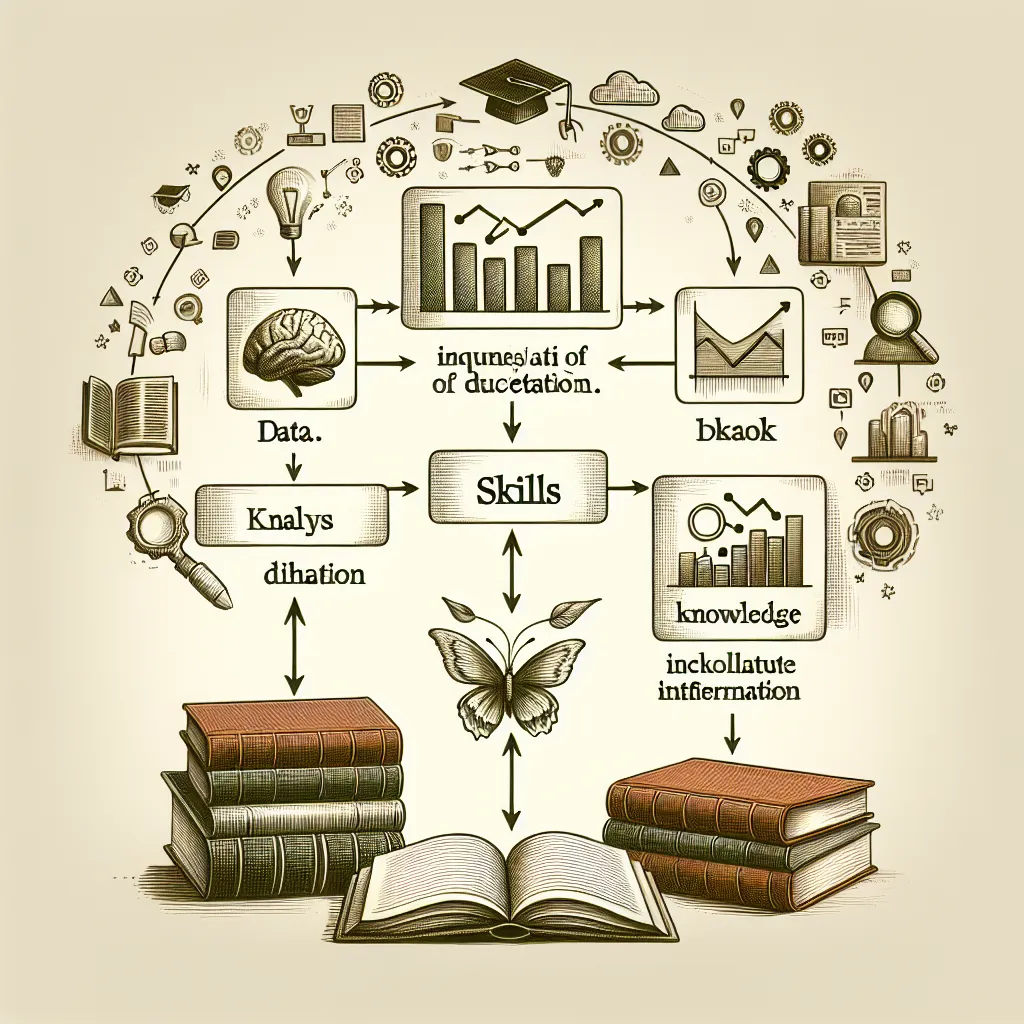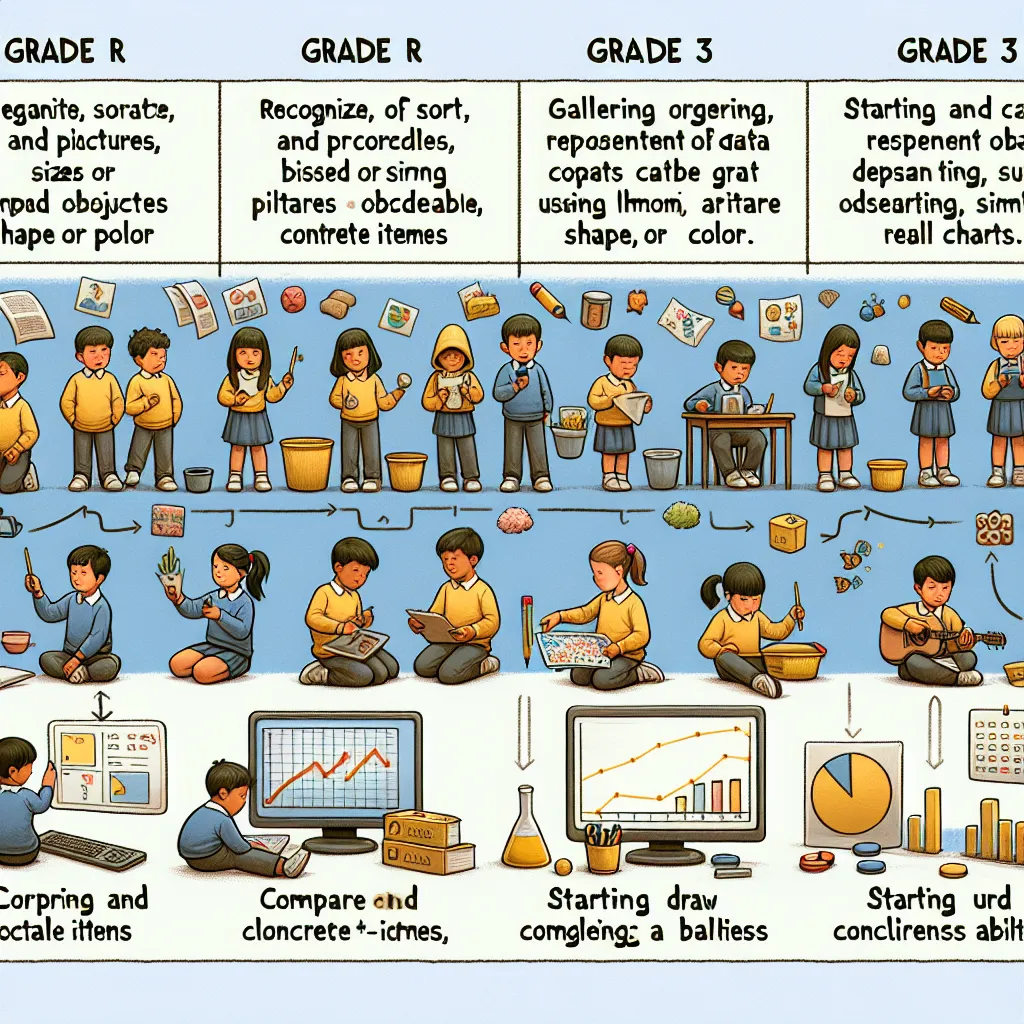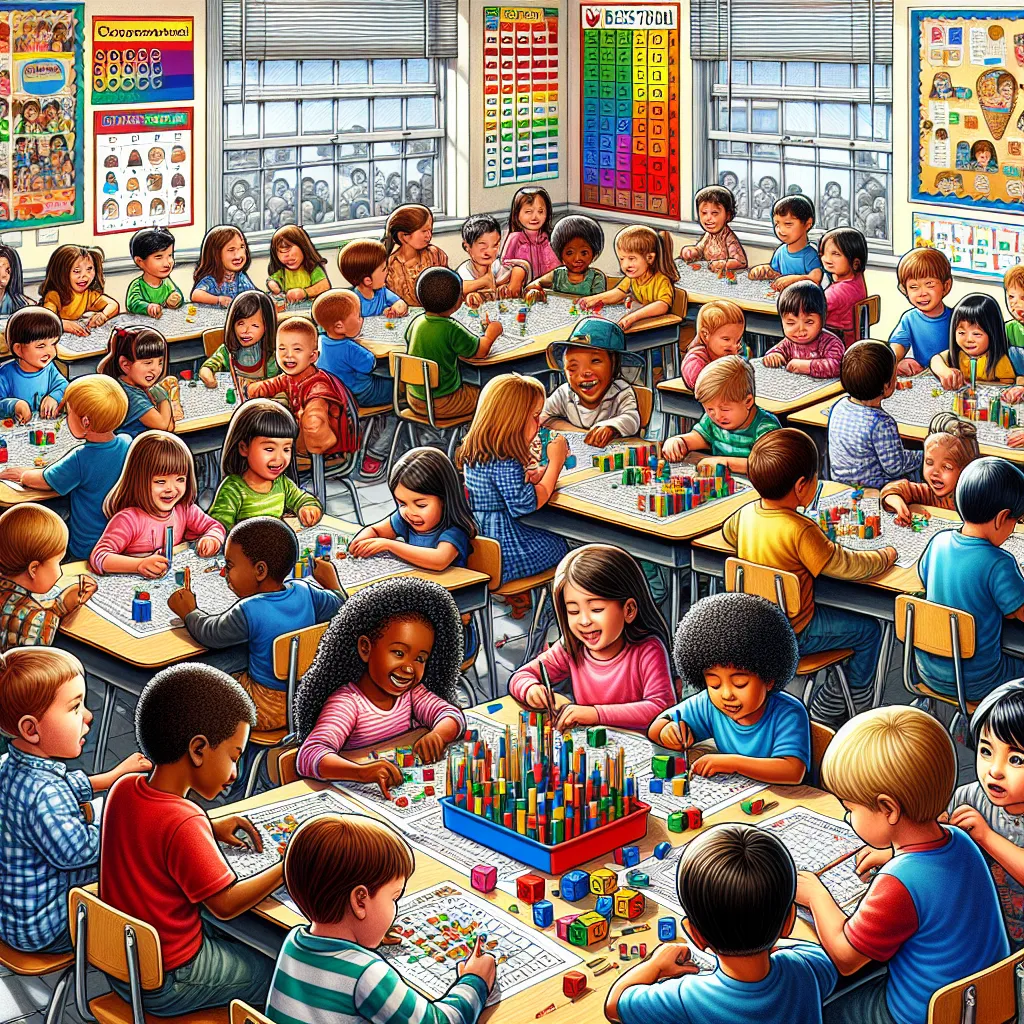Ask AI on The Internet
Question: In your own words, compare and contrast the sequence in which Grade R learners master data handling skills to the sequence in which Grades 1 to 3 master data handling. Write it in two paragraphs of about 5 to 6 lines or about 100 words each.
In Grade R, learners begin to master basic data handling skills by engaging with simple activities that help them recognize and sort objects based on attributes such as color, shape, or size. These young students are introduced to the concept of categorization and are often guided through hands-on activities where they can physically manipulate items. The focus at this stage is on fostering an understanding of grouping and counting in a very tangible way, ensuring that learners can visually and physically see the results of their data handling efforts. As learners progress to Grades 1 to 3, their data handling skills become more sophisticated. They start to engage with more abstract concepts, such as creating and interpreting simple graphs and charts. These students learn to organize data sets, recognize patterns, and draw conclusions from their analyses. Instruction often includes the use of tally charts, pictographs, and bar graphs, helping students to visually represent data and understand relationships between data points. The emphasis shifts from just categorizing and counting to interpreting and communicating findings, all while developing a foundational understanding of statistics and data analysis principles.
Think your answer is better than the AI's? Post it below.
Question Tags
If you want your question answered by an AI, click here.







Post your own comment: